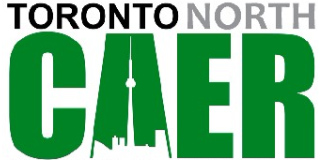Julia Lok of the Ontario Workplace Safety & Prevention Services made a presentation “COVID Best Practices at the Workplace”. Julia went over the legal requirements related to COVID including the Occupational Health & Safety Act, Reopening Ontario Act, Regulation 364/20, Employment Standards Act and local health orders and measures.
A COVID-19 safety plan includes screening, physical distancing, limiting capacity, cleaning & disinfection, PPE and face coverings. Safety plan best practices include:
- Following current requirements & advisories.
- Using Safety Plan Builder (www.workplacesafetyplanbuilder.labour.gov.on.ca).
- Providing clear & current info.
- Utilizing various communication options such as postings, email, etc.
Best practices for screening include:
- Screening all workers & non-workers before they enter including a questionnaire, RAT and self-monitoring tool.
- Screening visitors before arrival and on-site.
- Maintaining attendance records.
Risks can be controlled by limiting capacity in any congregating areas, utilizing outdoor spaces, using surgical & procedure masks, and using the ventilation checklist (www.ohcow.on.ca/posts/ventilation-checklist-covid-19/) and ventilation calculation tools (www.ohcow.on.ca/posts/classroom-ventilation-calculation-tool/).
Where there is a potential exposure you need to determine the contacts using cohorts & attendance information under Public Health guidance, communicate the exposure and have response procedures and return to work programs in place.
To manage risks you must regularly identify, access, recommend controls and evaluate hazards and potential harassment, threats & violence to workers and factors contributing to negative mental health.
To evaluate if your COVID safety plan is working you should have scheduled reviews, worker feedback, involve the health & safety representative and committee, and conduct monthly inspections.
WSPS COVID-19 Resources are available at (https://covid19.wsps.ca/) and on the WSPS website (https://www.wsps.ca/).
Rob Read of Environment Canada made a presentation on “Public Notifications under the E2 Regulations”.
Rob Read began the presentation on companies that E2 Regulation apply to having a substance on the list over prescribed limits. The responsible person for E2 should have detailed info including a description of measures. To communicate to the potentially impact areas of the potential consequences and the measures taken if an environmental emergency occurs. The presentation focused on the requirements under E2 Regulations for public notification.
Notification is required for the possibility and potential consequences of an environmental emergency, a description of the measures taken to protect life, health and the environment and the measures to communicate with the public during and after an emergency.
Before an emergency, the public that may be impacted outside of the facility by an emergency should be notified of potential emergencies, consequences and measures that will be taken if there is an emergency. Notification could include door to door, phone calls, email, town hall meetings and mailing pamphlets, etc. ECCC doesn’t prescribe how notifications are done. Examples of notifications prior to an emergency were shown including a Superior Propane notification letter and a Nestle plant notification in a newsletter. Rob said that notifications during and after an environmental emergency should include the measures taken and actions to reduce harm. He mentioned a text alert from Nuclear.
